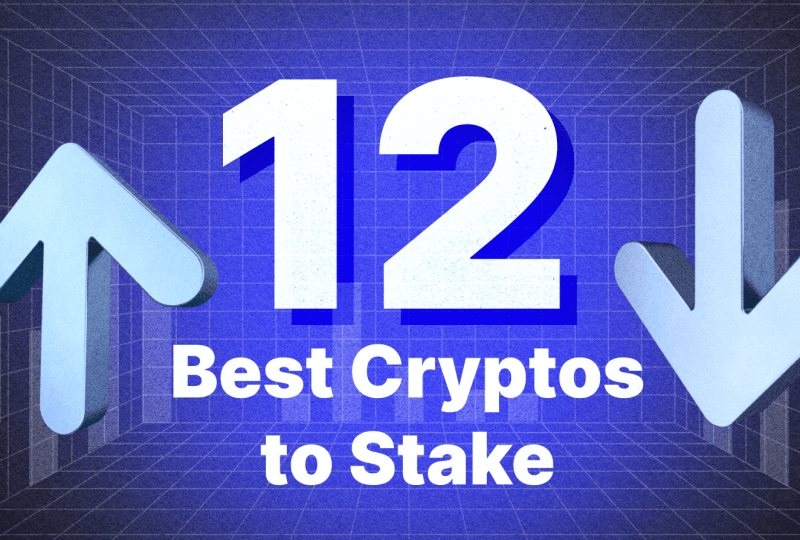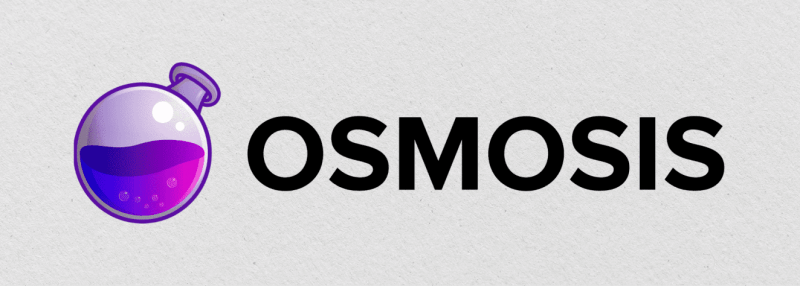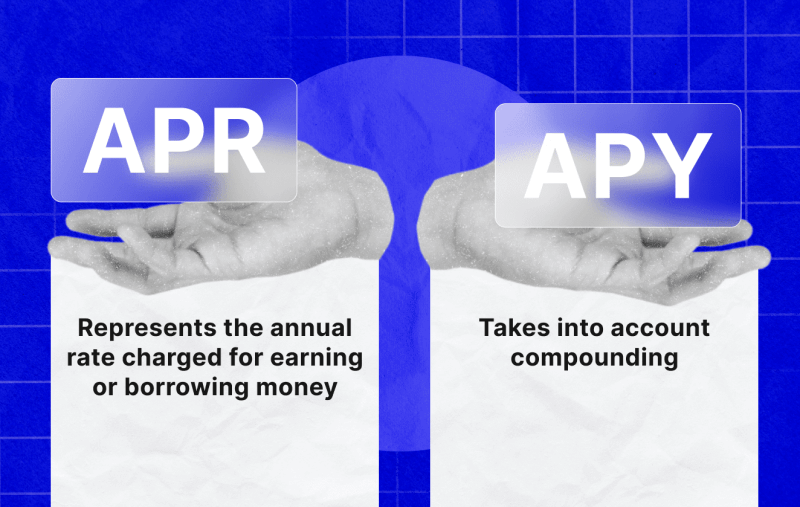12 Best Staking Crypto Coins with Highest Staking Rewards in 2024
May 07, 2024

Staking crypto tokens is a smart way for crypto holders to earn passively on their assets. The average staking reward today is 450% higher than the average dividend paid to investors in the S&P 500, the top 500 public companies in the US. This is despite the S&P 500 recording its best first-quarter growth performance since 2019.
However, with hundreds of staking coins available in the market, which ones should investors consider in 2024? In this article, we will explore the best staking crypto coins that can potentially provide attractive returns in the near future.
Key Takeaways
- Staking is a way to earn passively on crypto assets by locking them up for a specified duration.
- APY of some tokens can be as high as 20% or more, depending on the network and platform used for staking.
- Investors have various options for staking, including exchanges, becoming validators, or joining decentralized staking pools.
About Crypto Staking
Staking involves locking up your cryptocurrencies in a wallet to contribute to the security and functionality of a blockchain network. Doing so lets you take part in network activities, such as transaction validation, while receiving rewards in return.
Crypto staking operates on different consensus mechanisms, notably Proof-of-Stake (PoS) or delegated Proof-of-Stake (DPoS). There may be differences between blockchain networks in terms of staking policies and rewards structure. Staked tokens are usually not accessible for the specified duration of the staking contract.
Best Crypto to Stake in 2024
Now, let’s explore the top 10 currencies for crypto staking.
Injective (INJ)
Injective is a blockchain specifically designed for finance, providing open, interoperable solutions for next-generation DeFi applications. The network offers a powerful financial infrastructure for spot, perpetual, futures, and options – all built on the Cosmos SDK and utilizing Tendermint-based PoS algorithms.
Moreover, Injective showcases advanced smart contract functionalities with its integration of CosmWasm. It seamlessly interacts with Ethereum, IBC-compatible blockchains, and non-EVM chains like Solana, ensuring smooth cross-chain connectivity.
Plus, with developer incentives of 40% of fees generated by dApps built on Injective, the platform continues to attract new builders and grow its community, making it a great highest APY crypto staking option.

- APY: 14 – 15%
- Platforms: Binance, Coinbase, Trust Wallet, Keplr, Atomic Wallet
Cosmos (ATOM)
Cosmos is a decentralized network of interconnected blockchains with its own native token, ATOM. It aims to solve some of the biggest issues in the blockchain industry.
Cosmos’s core concept is its Interblockchain Communication (IBC) protocol, which allows for seamless communication between different blockchain networks. This protocol helps prevent fragmentation in the industry and opens up endless possibilities for cross-chain applications.
Thanks to its modular framework, developers can easily build dApps on the Cosmos network without facing the complexities and difficulties of other blockchain platforms.
ATOM token is vital in keeping the Cosmos Hub secure and is also used to govern the network. Investors can stake the token in various ways, including delegating to validators, using centralized exchanges, and running self-validators.

- APY: 12 – 15%
- Platforms: Keplr, Leap, Cosmostation, Binance, Kraken, Coinbase, Trust Wallet, HTX
Celestia (TIA)
Celestia is a newly launched modular blockchain network that allows for easy deployment of individual blockchains with minimal overhead. It stands out from traditional monolithic blockchains by separating execution from consensus, thus achieving greater scalability without sacrificing security or decentralization.
With Celestia, developers are free to define their own execution and settlement environments, unlocking new possibilities for builders and innovators. This modular approach also allows for easy experimentation and customization, as new application-specific or general-purpose blockchains can be deployed on Celestia and receive security from the network’s validators.
Staking TIA is an excellent way to support the growth of this blockchain while also earning generous staking rewards. The demand for TIA will only rise as more developers flock to Celestia to build their own blockchains, thereby becoming one of the best crypto staking options in 2024.

- APY: 14%
- Platforms: Keplr, Leap Wallet
Kusama (KSM)
Kusama is a highly experimental blockchain platform that aims to provide developers with interoperability and scalability. Built on Substrate by Parity Technologies, it shares the same codebase as Polkadot but offers features not yet available on its more established counterpart.
Often referred to as the “canary network” for its role in testing new technology before implementation on Polkadot, Kusama offers a low barrier to entry for deploying parachains and has lower bond requirements for validators. As such, it is an ideal platform for early-stage startups and experimentation in the blockchain space.
By staking KSM on Kusama, users can access a highly scalable and interoperable sharded network with potential for growth and innovation, rendering KSM a token to watch in 2024.

- APY: 9 – 19%
- Platforms: Terra Station Wallet, Kusama APP, Kraken
Avalanche (AVAX)
Avalanche is a fast-growing layer one blockchain that aims to challenge Ethereum’s dominance as the go-to platform for smart contracts. The network’s unique architecture, consisting of the X-Chain, C-Chain, and P-Chain, allows for high transaction output without sacrificing scalability.
Since its launch in 2020, Avalanche has been actively building an ecosystem of DeFi and DApp projects. It has also successfully integrated major Ethereum-based projects like SushiSwap and TrueUSD onto its network. In addition, Avalanche is continuously working on improving interoperability with Ethereum through the development of bridges.
There are many ways to invest in and stake AVAX, making it a promising option for those looking to diversify their staking portfolio. The project plans to grow in the future, including further scaling and adoption, making it one of the best staking coins in 2024 and beyond.

- APY: 7 – 18%
- Platforms: Avalanche Wallet, Binance, OKX
Polkadot (DOT)
Polkadot is an open-source, sharded multichain protocol. It enables interoperability between different blockchains, allowing for seamless communication and transfer of data and assets across chains. Today, Polkadot is a big player in a decentralized internet of blockchains, commonly referred to as Web3.
As a layer-0 meta protocol, Polkadot can update its code base without the necessity to fork the chain, ensuring the network remains secure and up-to-date according to the will of its token holders.
By staking DOT, the chain’s native token, users contribute to securing the network and earn rewards for their participation in consensus. Additionally, staking DOT allows for participation in the governance process and decision-making of the network, making it a highly attractive option for long-term holders.

- APY: 11 – 15%
- Platforms: Binance, Kraken, Crypto.com, ByBit, Wall Street Memes, Trust Wallet
Osmosis (OSMO)
Osmosis is a decentralized exchange (DEX) built on the Cosmos ecosystem. It allows for trading and liquidity provision of assets from various blockchains. Osmosis stands out from other DEXs due to its appchain structure, granting it greater control over the full blockchain stack.
Osmosis has a clear vision of building a cross-chain native DEX that connects all chains over IBC, including major players like Ethereum and Bitcoin. Osmosis also invites external developers to create a bespoke DEX ecosystem with various functionalities such as lending, margin trading, fiat on-ramps, and more – providing the best of both worlds in terms of centralized exchange features and decentralized finance trust minimization.
Staking OSMO is easy through multiple methods, including lending, custodial providers, decentralized lending platforms, and providing liquidity to different exchanges. With its features and clear vision for the future of decentralized finance, OSMO is a top contender among the best coins to stake in 2024.

- APY: 8 – 11%
- Platforms: Atomic Wallet, Ledger, Binance, Trust Wallet
NEAR Protocol (NEAR)
NEAR Protocol is a layer-one blockchain that aims to provide a community-run cloud computing platform with high speeds, throughput, and interoperability. It offers human-readable account names and its own consensus mechanism, “Doomslug,” making it user-friendly for developers and users.
NEAR Collective, the community behind NEAR Protocol, constantly updates the code and releases new features and updates to the ecosystem. With its goal of being a secure and performant platform for high-value assets, NEAR has caught the attention of projects such as Flux and Mintbase, which are building on its blockchain.
As the community continues to grow and new projects are built on NEAR, staking NEAR is a strong investment for the future of blockchain technology. Overall, with its innovative solutions and growing ecosystem, NEAR Protocol is another great token for staking in 2024.

- APY: 8 – 11%
- Platforms: Coinbase, Ledger, Binance, Trust Wallet
Aptos (APT)
Aptos is a blockchain that offers a unique smart contract programming language called Move, developed by Meta (formerly Facebook)’s Diem blockchain engineers. Its goal is to bring mainstream adoption to web3 and empower an ecosystem of dApps that solve real-world problems for users.
Aptos stands out for its theoretical transaction throughput of over 150,000 transactions per second through parallel execution, making it one of the fastest PoS blockchains in the market. It also takes a sustainable approach to staking rewards by implementing a token-burning mechanism that reduces inflation and benefits long-term stakers.

- APY: 7 – 9%
- Platforms: Binance, BitForex, BKEX, Bybit, Gate.io, OKX, Phemex.
Band Protocol (BAND)
Band Protocol is a cross-chain data oracle platform that enables real-world data exchange between on-chain and off-chain sources. Its architecture allows for reputable and verifiable real-world data to be used in on-chain applications –- opening up a wide range of use cases for developers.
Since its launch, Band Protocol’s native BAND token has been a great performer in the market. As the demand for reliable and accurate data in dApps continues to grow, staking BAND will continue to be a profitable option in 2024.

- APY: 7 – 15%
- Platforms: Binance, KuCoin, Atomic Wallet
Dymension (DYM)
Dymension is a cutting-edge blockchain network that combines features like RollApps, data availability networks, and the Dymension Hub for effective network management. Its token, DYM, plays a crucial role in network operations and rewards for users.
Focusing on gaming and DeFi applications, Dymension caters to a wide range of users and developers. With its advanced technology and developer-friendly approach, staking DYM in 2024 is a smart investment choice with significant potential.

- APY: 10 – 13%
- Platforms: Kraken
Tron (TRX)
Tron is a decentralized blockchain-based operating system that aims to give content creators full ownership rights and greater rewards for their work. It achieves this by cutting out intermediaries like YouTube, Facebook, or Apple, allowing consumers to directly reward content makers.
TRON also supports smart contracts, various blockchain systems, and dApps. Its transaction model is similar to Bitcoin’s UTXO model, giving users full transparency and control over their operations.

- APY: 8-10%
- Platforms: Nexo, EarnPark, HTX
APY vs APR
When it comes to the staking process and its rewards, two important terms to understand are Annual Percentage Yield (APY) and Annual Percentage Rate (APR).
ARP
APR is the amount of interest earned on staked assets over one year. It is a fixed rate and does not consider any compound interest accrued. The formula for calculating ARP looks like this:
ARP = (Total rewards earned during the year / Total staked amount) * 100
For instance, if an investor stakes 1000 tokens in a network with a fixed APR of 10%, they will earn 100 tokens as rewards by the end of the year.
APY
APY is the total interest earned on a staked amount over a year, which takes into account compound interest, meaning that the interest earned in each period is added to the principal and then used to calculate the next period’s interest. The formula for calculating APY looks like this:
APY = (1 + Interest / Number of Periods) ^ Number of Periods – 1
For example, if an investor stakes 1000 tokens in a network with a fixed APY of 10% compounded monthly, they will earn 104 tokens at the end of the year. The number is higher because the interest earned each period (every month) is added to the principal and then used to calculate the next period’s interest.

Where to Stake Crypto?
The selection of where to stake cryptocurrency significantly depends on the individual investor’s preferences and technical capabilities. Beginners can consider placing stake via exchanges, a method that is convenient and accessible. However, these exchanges might levy certain service fees.
Investors with an advanced understanding of the crypto market could explore the route of becoming a validator, which is arguably the best method to stake cryptocurrencies. This approach necessitates the establishment of a personal staking infrastructure equipped with the requisite hardware and software.
On the other hand, decentralized staking pools present a balanced alternative. Here, investors pool their assets and receive the ensuing rewards in proportion to their individual contributions.
Closing Thoughts
Staking is undoubtedly a popular and attractive option for crypto enthusiasts seeking passive income. With its low entry barrier and potential for increased holdings, it’s no surprise that staking has gained so much traction in the crypto world.
However, as with any investment or activity involving cryptocurrency, there are risks to consider before staking. The volatility of the market can greatly impact the rewards received, and lock-up periods mean that your funds will be inaccessible for a certain amount of time.
Additionally, fees may still apply when staking, so make sure you understand different crypto staking platforms and exchanges before choosing where to stake your coins or tokens.
Despite these potential drawbacks, staking remains a valuable tool for individuals looking to grow their crypto holdings and participate in the decision-making process of a particular blockchain network.
Disclaimer: The information provided in this article is for educational and informational purposes only. It should not be construed as financial or investment advice.
FAQ
Is crypto staking worth it?
Yes, crypto staking can be profitable for investors looking for long-term returns. However, make sure you take into account your investment goals and horizon prior to staking. Staking involves locking up your assets for a specific period, so if you anticipate needing access to those funds in the short term, it may not be the best option for you.
Is staking better than HODLing?
Yes, staking can be a better option than simply holding tokens, since it gives you the opportunity to earn passive income by contributing to the network.
Is mining more profitable than staking?
The profitability of mining versus staking depends on various factors such as technical expertise, initial investment, and energy consumption considerations.
Mining may yield higher profits for individuals with access to inexpensive electricity and powerful mining equipment. On the other hand, staking can be a more profitable option in the long run, especially for those not interested in actively managing their investments. Moreover, staking does not require high-end hardware or continuous maintenance like mining does.
Which platform is the best for crypto staking?
The best platform will depend on your specific needs and preferences. However, some popular options for staking include Coinbase, Bitstamp, Binance, KuCoin, and OKX.




